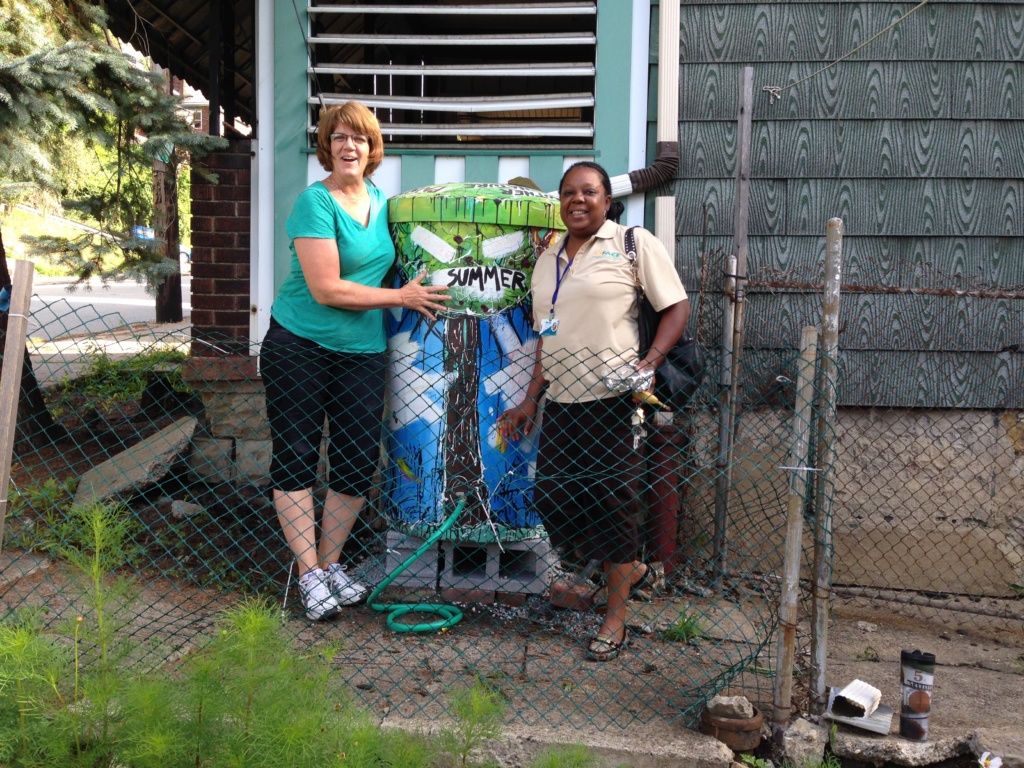Estimating Water Use
There are many factors that impact the amount of water used on a given garden: rainfall amount, the crops being grown, use of mulch (which cuts down on evaporation), soil texture. Despite these variables, it’s possible to get a general sense of how much water you will need during the course of a growing season using the following information:
Most plants need 1-2 inches of rain per week to thrive.
This translates to .36-.72 gallons of water per week.
Multiplying this number by the amount of square footage in your garden area will give you a ballpark estimate for each week’s water consumption. From this, you can check the water rates from your water company to get a cost estimate for each month. Keep in mind that water usage will vary: you will probably consume more water in July and August than any other month.
Rain Gauge
For a working estimate of how much natural rain has fallen, consider placing a rain gauge in your garden.
Water saving tips:
- Water in the morning or evening rather than the middle of the day
- Use drip irrigation
- Apply a thick mulch where appropriate
- Build up your soil with compost to improve water retention

Rainwater Catchment
In Pittsburgh, where heavy rain events often wash pollutants, sewage, and debris into our streams and rivers, it is important to keep storm water out of our overtaxed sewage system. Rainwater catchment is a system put in place that captures rainfall to be used for home use (gardens, house plants, etc.).
How to install rainwater collection using your home’s downspout
Calculations
Raincatch potential per inch of rain = 0.6 gallons x surface area
(i.e. for every inch of rain that falls on a catchment area of 1,000 square feet, you can expect to collect approximately 600 gallons of rainwater)
Annual Raincatch Potential = Raincatch potential per inch of rain x annual rainfall (36.68″ for Pittsburgh)
Calculator for identifying the amount of water that can be harvested from a given area
Drip Irrigation
Rainwater barrels or hoses can be connected to drip irrigation hoses to make watering your garden as easy as turning on the spigot. Hose is laid at the beginning of the season and connected to the rainwater barrel. Gardeners simply turn on the spigot and rainwater automatically waters the garden.
Specific Garden Watering Needs
When watering your garden, be sure to use a hose fitted with a nozzle that gives a gentle spray. Direct the water to the soil around the plants, not the leaves of the plants. Give the soil a gentle first coat of water to “prime” it. The water should not pool during this first application. When you are done, the soil is ready to receive a second, larger soaking. As soon as you see the water begin to pool during this watering, move on to another section until your whole garden has been watered thoroughly. Be careful that little water runs off of your garden. Using mulch (straw, leaves, woodchips, burlap, cardboard, etc.) around plantings can reduce run-off and evaporation.
Seedlings and young plants should be watered every day or two. Once plants are well-established, they will need water only every five to seven days. The best time to water is in the early morning or in the evening. The second best time to water is whenever you have a spare minute, no matter the time of day.
Rainbarrel Suppliers
Whole Foods Market
Ph: (412) 441-7960
Pennsylvania Resources Council
Ph: (412) 488-7490
Stormworks
Ph: (412) 243-7680
Drainage in Gardens
When considering a garden site, look for an area that is level and well drained. If plants are grown in areas with poor drainage, diseases can occur. Add organic matter in the form of compost to increase drainage.
To test drainage (a great activity with kids!):
- Pick a mild and sunny day, when your ground is neither to wet or to dry. Using a garden spade dig a hole in the middle of your planting area, making it about 1 foot deep and 1 foot wide.
- Insert a ruler vertically into the hole, so that you can clearly read the measurements and so that the ruler is as level as possible.
- Fill the hole with water and then record the level of the water from the ruler.
- Take notes on the level of the water every fifteen minutes until you have recorded sufficient measurements to determine the rate of drainage hourly.
- In gardens with adequate drainage, the level of water should drop by an inch an hour and the hole should be empty in 12 hours.
